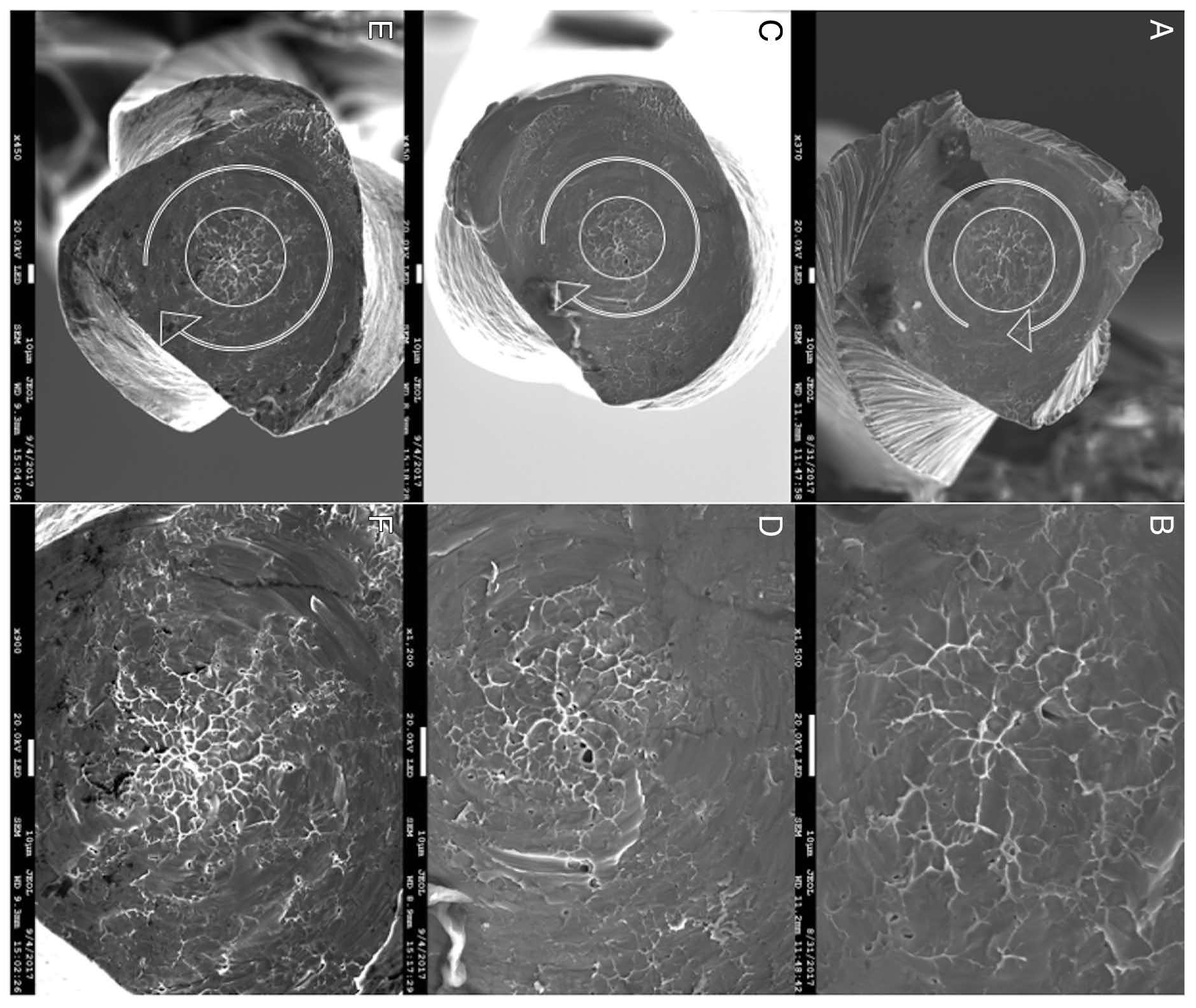Highlights
•Cyclic resistance, torsional resistance, and bending stiffness of glide path files made of different alloys were compared using custom devices.
•EdgeGlidePath made from heat-treated wire showed higher cyclic resistance than ProGlider and One G.
•One G made from conventional NiTi wire showed higher torsional resistance than EdgeGlidePath and ProGlider.
•One G made from conventional NiTi wire showed higher bending stiffness than EdgeGlidePath and ProGlider.
Abstract
Introduction
The aim of this study was to compare the cyclic fatigue, torsional resistance, and bending stiffness of single-file glide path preparation nickel-titanium instruments.
Methods
ProGlider (#16/progressive taper; Dentsply Sirona, Ballaigues, Switzerland), One G (#14/.03; Micro-Mega, Besancon, France), and EdgeGlidePath (#16/progressive taper; Edge Endo, Albuquerque, NM) were tested. For the bending stiffness test, the instrument was bent to a 45° angle along the main axis while 3 mm of the tip was secured. Cyclic fatigue resistance was measured during pecking movement, whereas the file was rotated within a reproducible simulated canal with a 3-mm radius and a 90° angle of curvature. The ultimate torsional strength and toughness were evaluated using a custom device. While tightly holding the end of the file at 3 mm, a rotational load of 2 rpm speed was applied until fracture. The results were analyzed using 1-way analysis of variance and Tukey post hoc comparison. A microscopic inspection was performed on the surface of a separate instrument using a scanning electron microscope.
Results
EdgeGlidePath showed superior cyclic fatigue resistance compared with the other systems. One G showed higher maximum torsional strength than the others. One G showed the largest distortion angle and the highest toughness followed by EdgeGlidePath and ProGlider (P < .05). One G also showed larger bending stiffness than the others, whereas EdgeGlidePath showed a larger residual angle than the others (P < .05).
Conclusions
Conventional wire showed higher toughness and torsional resistance than M-Wire and heat-treated nickel-titanium instruments. However, heat-treated wire showed higher cyclic resistance than conventional wire and M-Wire.
Read Full Study Here: Mechanical Properties of Various Glide Path Preparation Nickel-titanium Rotary Instruments

